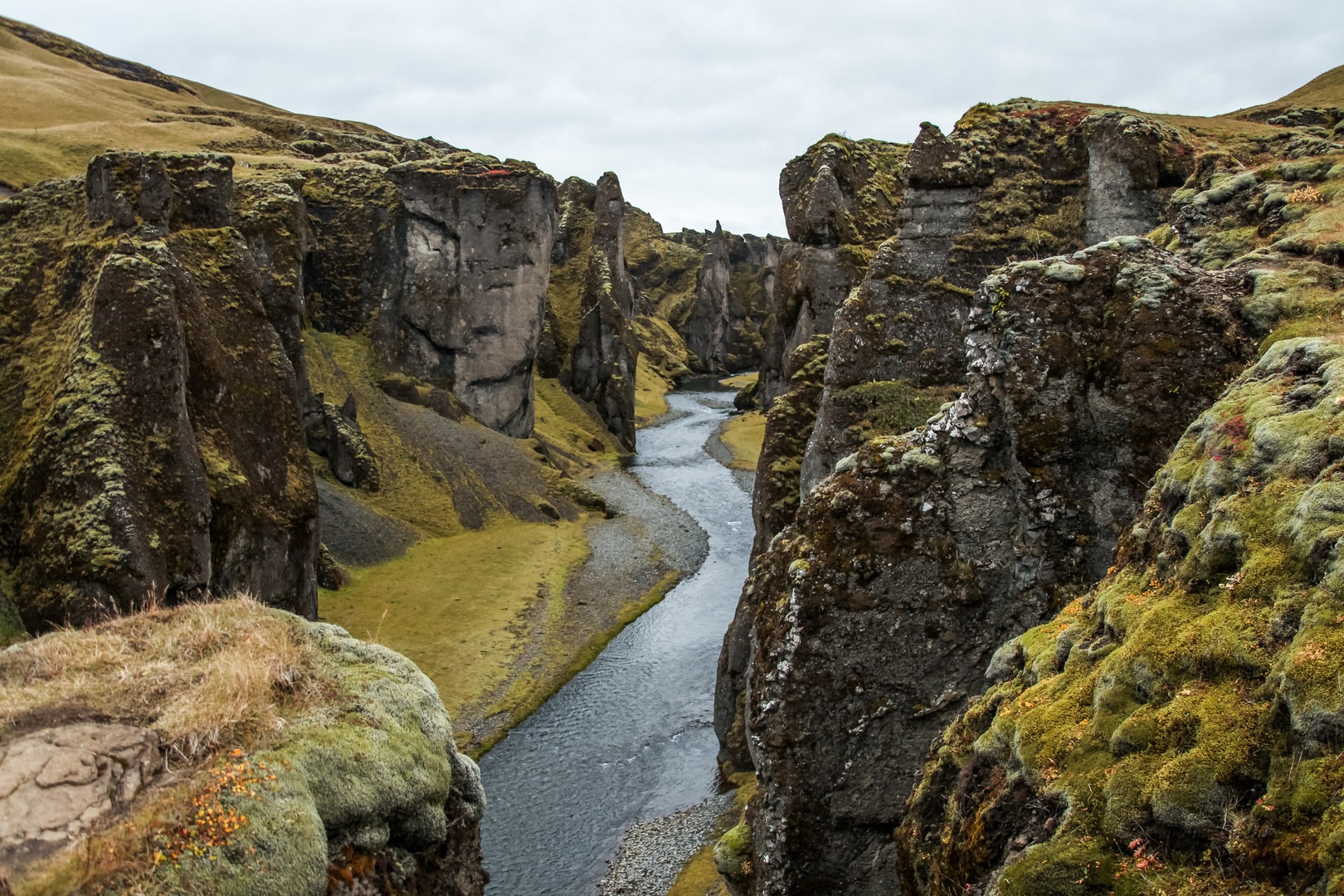You are here
Fjaðrárgljúfur is a 2-kilometer (1.25-mile) canyon in the southern region of Iceland with 100-meter (328-foot) high moss-covered walls that have been carved and washed by glacial melt of thousands of years. It is located about 2 kilometers off of Route N1, the “Ring Road,” between Vík and Skaftafell, nearby the village of Kirkjubæjarklaustur. Hikers can explore the upper edges or walk down to the base and wade in the slowly moving water. The area is easy to travel to and can be explored all times of the year. Despite its beauty and popularity, there is a chance that there will be very few people there upon your arrival.
Heading east on the Ring Road toward Skaftafell, make a left to road F206, nicknamed “Laki Road.” Shortly after, there is a small intersection; the road to the right leads to Lakagígar (an F road requiring an appropriate four-wheel drive vehicle), and the road to the left will take you to the canyon. This final stretch is unpaved but suitable for any type of car. You will pass small cabin and cross a bridge to a where there is small parking area and an informational sign at the trailhead.
A majestic walking path goes along the canyon’s edge up to cliff tops. You will be graced with spectacular views that span from the high green walls down to the low flowing water. Follow the designated path and explore some of the short divergences for some interesting perspectives. This trail provides a continuous, awe-inspiring experience, but heed to the warning signs because some of the outlooks can be very dangerous. Please do not disrupt the delicate moss.
Return on the same path to the car park, and walk down the hill to the water’s edge. You can usually wade here and venture upstream into the canyon. It isn’t very deep, so you can continue to tread until the waterfalls are before you. Take some time to bathe in their mist, and return the same way.
The bedrock in Fjaðrárgljúfur is believed to be about 2 million years old and composed mostly of palagonite, which has a chemical composition similar to basalt. It forms as water flashes to steam resulting in the expulsion of volcanic glass and ash that creates a matrix of hardened rock. (The material can be considered both sedimentary and igneous in nature.) The actual canyon was carved out by glacial runoff from the last ice age about 9,000 years ago. The runoff collected into a large lake that eventually filled with sediment where Fjaðrárgljúfur is today. There are fluvial terraces on both sides of the valley that give some indication as to this former lake’s height and specific location. The river is called the Fjaðrá and has its source in the Geirlandshraun Mountain. Over time, this flow has continued to dig a narrow gorge through the valley and empty into the Skaftá River.
There are several hotels along the banks of the river with spectacular views of the canyon as well as the lake. The local people are happy to share information about the area, and they can often be the best guides if you are looking for a more personal experience.
Logistics + Planning
Current Weather: Powered by Dark Sky
























Comments
Sign In and share them.